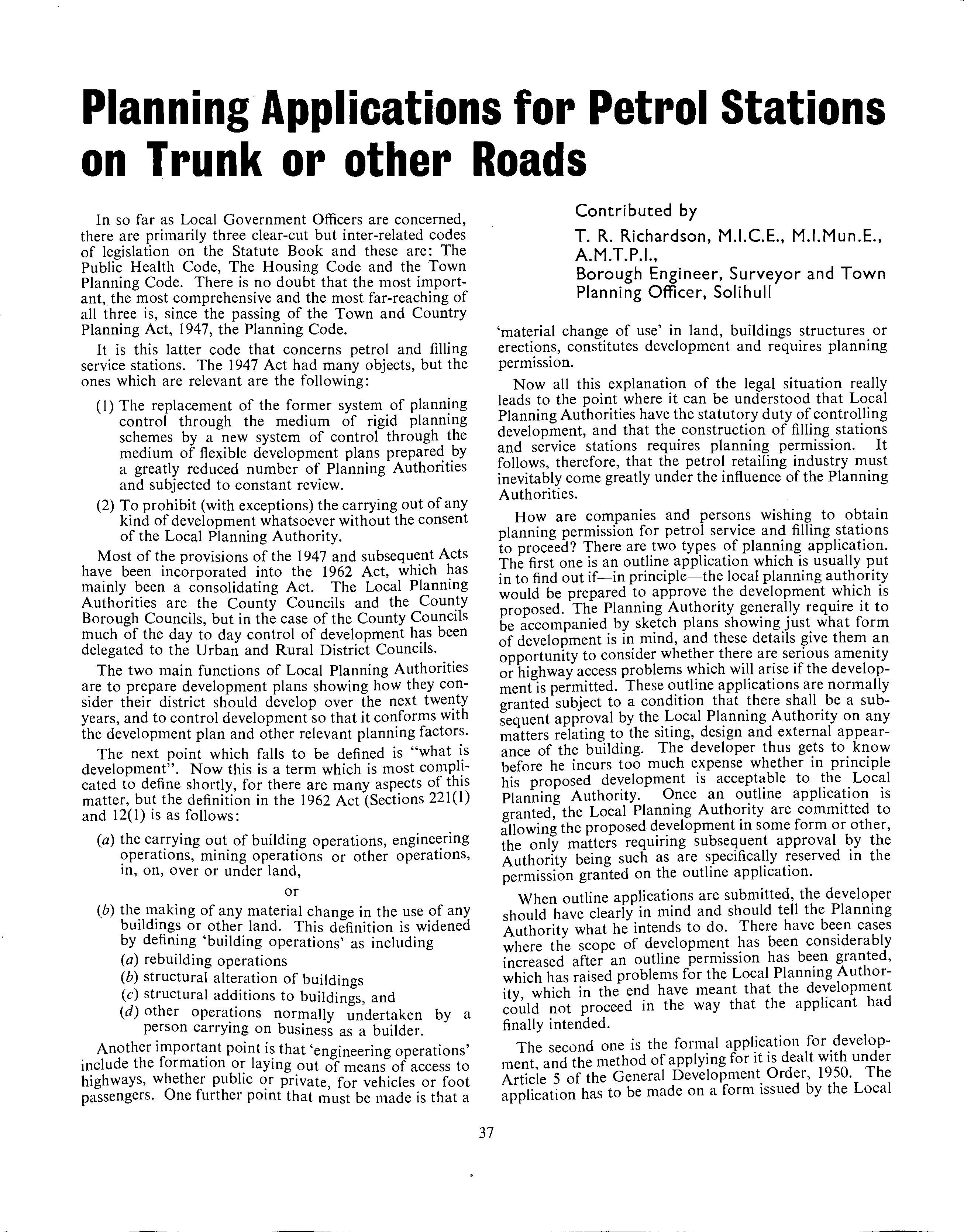
4 minute read
IN PARLIAMENT
from The Bulletin – April 1966
by apeauk
may well rise to above 10 per cent. Recently, Dr. Vondeling, the Finance Minister of the Netherlands Government, has estimated that by 1971-1972 the country's exports of natural gas will be of the order of 20 milliard cubic metres a year.
Certainly, long-term contracts have already been signed with Thyssengas and Ruhrgas in West Germany and Distrigaz in Belgium. Exploratory discussions are also under way with other German gas companies, with Gaz de France and with the Gas Council of Great Britain. Both in Belgium and West Germany new pipelines will have to be built before the gas can start flowing from the Netherlands. The exports to Belgium will begin at 1 milliard cubic metres a year, rising to a maximum of 6 milliard cubic metres for domestic and industrial consumers by 1975. Large though these quantities may be, the exports to West Germany are even more important, since they open up the densely populated industrial area of the Ruhr. In 1966 the first milliard cubic metres of Dutch gas will flow into West Germany; but by 1975 the figure may well be about 13 milliards. Besides Northern France (with a potential market for 5 milliards) and also an initial market of 5 milliards in Britain, other possible customers for Groningen gas are Switzerland, Austria and Northern Italy.
Advertisement
As far as Britain is concerned-and assuming that mutually satisfactory prices and conditions can be agreed between N.A.M. (Gas Export) and the Gas Councilthere is a very strong possibility that Groningen natural gas will be imported to meet the rapidly growing demand that is expected to continue throughout the rore.seeable future. There is, however, the problem of gettmg it here; for, in one way or another, it will have to cross the North Sea.
There are two possible methods of transporting it: one is to build a liquefaction plant in the Netherlands ~nd then ship the liquefied natural gas by tanker; the oth.er is to lay a submarine pipeline between the two countries. Ec<;>nomically, the pipeline should prove the more att~act~ve proposition. Once laid, it should be capable of dehvermg gas, with little more than routine maintenance, for over a quarter of a century. .
A joint pipeline study has now been carried out for the Gas Council, N.A.M. (Gas Export) and I.G.T.M. to determine the best possible route for bringing Netherla~ds Gas to Britain. Three routes have been studied, includmg the shortest route-across the English Channel.
It has been suggested by some people that, before Britain commit.s hers.elf, we really ought to wait for ~he results of the intensive exploration that is now takmg place on this side of the North Sea-particularly since the presence of gas has already been confirmed, though the amount has yet to be established. Obviously an indigenous source o~ m~tural gas would be very advantageous to this count.ry .1f it were large enough to justify commercial exploitation.
But the ~eal question is: can we afford to wait that long ? The Gronu~gen gas. field was proved in 1959. It is only now becommg possible to develop it on a large scale. Can we afford to wart several_Years for the proving and exploitation of a field of gas m the hostile environment of the North Sea?
"The gas industry'', said Sir Henry Jones, Chairman of the Gas Council, "is ready to handle any commercial quantity of gas, large or small, that can be found". There seems to be no reason at all why Dutch gas and any North Sea gas that may become exploitable should not both be ultimately used to meet the projected growth in demand.
Meanwhile, with more than 1,100 milliard cubic metres of natural gas known to exist under the fields of Groningen and with the lesser gas fields and oil-fields that have been discovered in recent years, Europe's security of supply is now greater than at any previous period in the history of the petroleum age. There can be little doubt that, with the tremendous and sustained search now being carried out in the North Sea and on land in the adjacent countries, security of supply can only increase.
From Esso Magazine, Winter 1965/66.
IN
PARLIAMENT
Dangerous Substances (Conveyance by Road)
Mr. George Thomas: My right hon. and learned friend has no reason for supposing that the regulations governing the conveyance by road of petroleum spirit and carbon disulphide, made under the Petroleum (Consolidation) Act, 1928, are not properly enforced. His Standing Advisory Committee on Dangerous Substances is at present considering the possibility of extending the regulations to a much wider range of dangerous substances. Road tank wagons carrying dangerous substances are subject, in common with all other vehicles, to the general law relating to the construction and use of motor vehicles.
Petrol and Productivity
The Committee which has been examining the question of allowing petrol stations supplying the public to ?Se automatic cut off nozzles has made progress. The draftmg of amendments to existing codes of recommendations to local authorities has been completed, M.P's learnt, and these are bring submitted for consideration by the Standing Advisory Committee on Dangerous Substances. R. Gresham Cooke who has been urging widespread use of these nozzle~-as in Australia-~ointed ou~ ~hat they sho~ld lead to a greater increas~ m productivity at the filh.ng stations, as they are designed to serve more cars with about the same number of staff.
43










